Quadriceps muscle pain: Cause, Symptoms, Diagnosis, Treatment, Exercise
Quadriceps muscle pain is mostly located in the front side of the thigh (above knee) mostly occurs due to overuse work, sports activity or quadriceps strain or knee jerk related activity.
- The quadriceps muscle is made up of four muscles which are located on the front of the thigh.
- This quadriceps muscle is responsible for flexing the hip joint & extending/straightening the knee joint.
- If the patient feels pain in the front of the thigh it is indicated to be quadriceps muscle pain.
- Quadriceps muscle pain is the result of the many Injuries in the quadriceps muscle.
- Treatment of the quadriceps muscle pain involves RICE principle = rest, ice, compression & elevation.
- Sometimes use physiotherapy which is help to regain range of motion = ROM & muscle strength.
- Surgery is needed to repair the tendon ruptures, to relieve compartment syndrome & muscle herniation
Table of Contents
What is the quadriceps muscle?
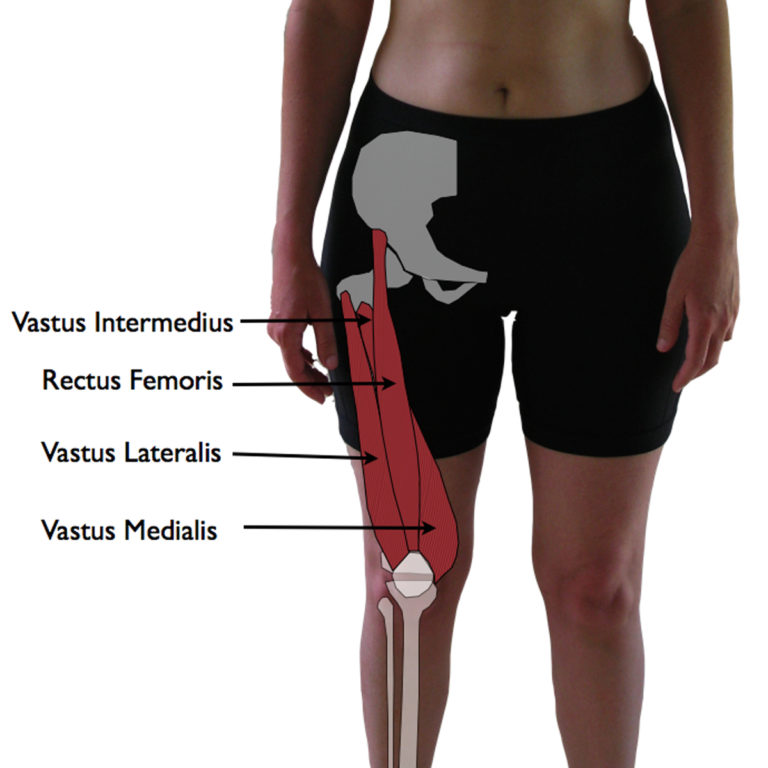
- The quadriceps muscle is located in the front of the thigh which is responsible for extending or straightening the knee joint & flexing the hip joint.
- this quadriceps muscle is made up of the four muscles:
- Rectus femoris
- Vastus medialis
- Vastus intermedius
- Vastus lateralis
- The rectus femoris muscle = this muscle begins with its attachment to the ilium, one of the attachments is pelvic bones & then crosses the hip joint.
- Like it, the runs down the front of the thigh, then this muscle portion of the rectus femoris becomes to tendon & joins with the tendons of the three vastus muscles for to form the quadriceps tendon, just above at the kneecap – patella.
- On that side of the patella, The tendon is renamed the patellar tendon which crosses the knee joint then attaches to the tibial tubercle which is the presence of bony prominence on the tibia.
What are the causes of quadriceps muscle pain?
- Contusion/bruise
- The most common cause of the quadriceps muscle is a contusion/bruise, which is a direct blow to the anterior thigh, which is the cause of some blood vessels within the muscle being damaged & bleed.
- This condition is produced by pain due to inflammation of the surrounding muscle.
- Since the rectus femoris muscle which is part of the quadriceps muscle lies closest to the surface of the anterior thigh, it is the muscle most often contused.
- Compartment syndrome
- When the do significant bleeding into the quadriceps muscle, this occurs due to the compartment syndrome in this condition apply pressure in the compartment so that pressure rises the quadriceps muscle higher than blood pressure, preventing form condition of muscle tissue from being supplied with the oxygen-rich blood is pumped from the heart.

- Quadriceps muscle strain
- The quadriceps muscle is strained due to overuse/overstretching.
- This strain involves tendon fibers, muscle fibers & sometimes both.
- These Muscle strains are categorized depending on the severity of the injury.
- There are present of three different grades of muscle strains.
- Grade 1 strains = Involve muscle fibers that are only stretched not torn.
- Grade 2 strains = Involve a whole muscle that is partially torn with the more extensive damage.
- Grade 3 strains = Occurs when a muscle is completely torn.
- Tendinitis
- Quadriceps pain also due to the Tendinitis of quadriceps means inflammation of the quadriceps tendon which occurs above the patellar.
- Patellar tendinitis is also caused by quadriceps muscle pain in this condition inflammation is occur below the patella at the level of the knee joint.
- Another condition is Jumper’s knee which is also known as the peri-patellar tendinosis = chronic degeneration of the quadriceps tendon where the muscle fibers are transition into tendon fibers just above the patella – kneecap.
- Tendon rupture
- Sometimes this pain is due to the complete rupture of The quadriceps /the patellar tendon which leads to the inability to fully extend & straighten the knee joint.
What are the Signs & Symptoms of Quadriceps muscles pain?
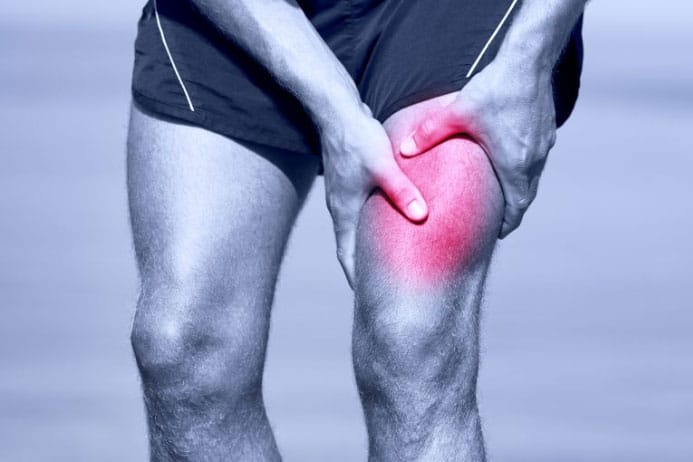
- Signs and symptoms of quadriceps pain depend upon the type of injury of quadriceps muscle & severity.
- Patient feel the anterior thigh pain,
- Cramping feel in the quadriceps muscle,
- Bruising or discoloration of the skin around the quadriceps muscle,
- Tenderness present at the anterior thigh
- Heard the popping sound or tearing sensation in the quadriceps muscle.
- In the assessment show the decrease of the ROM of the leg.
- Patient feel the pain during some daily activities like as walking, stair climbing
- Sometimes sensation alteration of the anterior thigh in the patient.
What are the risk factors for a cause of quadriceps pain?
- Contusions
- The first cause is Contusions which occur due to another person/by an object.
- In this condition damage to the muscle fibers & is associated with bleeding.
- So that occur trauma in the muscle, like a major crush injury & associated fractured in the femur.
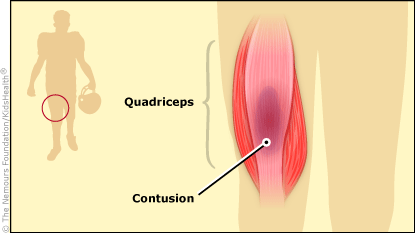
- Compartment syndrome
- This condition is a surgical emergency that occurs when the pressure inside the quadriceps muscle compartment is so high that it prevents adequate blood flow from the muscle itself.
- This condition causes the muscle cells of the quadriceps muscle to die due to the lack of oxygen supply leading to long-term muscle & nerve damage.
- Strain
- Strains of the quadriceps muscle occur as to the consequence of the repetitive overuse & become to muscle fibers inflamed & sometimes to partially tear.
- This strain is commonly seen in athletes who always get to weight training, but it occurs in people who perform manual labor which is required to some degree of lifting heavier objects.
- Partial tears occur when the patient is running/kicking.
- Tendinitis
- This condition occurs as inflammation of the tendon which is attached to the quadriceps muscles to the tibial tubercle.
- Especially, the patellar tendon becomes inflamed which is leading to pain & swelling in the area below the kneecap [ patella ].
- it occurs due to repetitive injury problems so that damage occurs to the tendon.
- Peri-patellar tendinosis which is also known as the jumper’s knee of an overuse injury occurs to microtears in the area where the quadriceps tendon inserts into the top/bottom of the patella.
- Due to the acute inflammation, starts degenerating & scarring around the front of the thigh.
- This injury is most commonly occurs in people who repeatedly engage in sports activities involve to intense jumping such as volleyball & basketball,
- Tendon rupture
- It occurs when doing the violent contraction of the quadriceps muscle during the knee joint is flexed causing the quadriceps /patellar tendon to completely tear/rupture.
- This tendon rupture occurs more commonly in patients who are older than 40 years of age.
- This tendon rupture occurs less frequently & typically seen in younger patients.
- Some condition which is increased to the risk of rupture an underlying medical condition & other certain medications, like as
- Diabetes mellitus
- Obesity
- Gout
- Rheumatoid arthritis
- Kidney disease
- Systemic lupus erythematosus (SLE)
- Anabolic steroid use
- Metabolic bone disease (such as hyperparathyroidism)
What is the diagnosis of quadriceps muscle pain?
- First of all health care provider [ doctor or therapist ] take to detailed history & then do the physical examination.
- Some causes of the pain are the diagnosis in the clinic but some conditions need to be reported.
- Imaging
- Plain X-rays of the anterior thigh are helpful to check the associated fracture of the femur bone or patella.
- if the occur of Myositis ossificans means a bony growth which develops within the muscle is also seen in the X-ray.
- in some cases need to MRI for the diagnosis.
- For the tendon rupture diagnosis use to Ultrasound determine the partial versus.
- Blood tests
- Creatine phosphokinase = CPK or CK levels are measured for the diagnosis of major muscle damage.
- CPK = Creatine phosphokinase leaks from the damaged muscle cells & levels are markedly elevated in the rhabdomyolysis.
- Creatinine is used in a blood test that measures kidney function.
What is the treatment for quadriceps muscle pain?

- In the starting phase of the quadriceps muscle pain is treated with the RICE principle
- R – Rest = advice to the patient for rest and use the crutches for the weight-bearing.
- I – Ice = applied ice for the 20 minutes at the area of pain, the patient is also used to ice pake & frozen pieces of ice.
- C- Compression = applied to compression bandage to reduce the swelling.
- E- Elevation = put the leg in elevation with the help of a pillow.
- Anti-inflammatory medications like ibuprofen – Motrin & Advil is helpful.
- These medications are available over the counter & it is safe to take for the individual patient.
- Use the Crutches/other gait-assist devices are needed depending upon the level of pain and for the weight-bearing.
- After to short period of rest, most people start to return to normal function as the pain allows.
- In some conditions after exercise patient returns to normal sports.
Electrotherapy for the quadriceps pain:
- In physiotherapy used to many modalities for pain relief.
- Used to SWD [ short wave diathermy ], TENS & IFT for pain relief.
- If any tender point is present & swelling present applies to US [ ultrasound ].
Stretching for the quadriceps pain:
- Lunging Hip Flexor Stretch
- Standing Quadriceps Stretch

Lunging Hip Flexor Stretch:
- The starting position for the stretching exercise is the kneeling position.
- Kneel position on to the left knee then keep the right shin on to the ground.
- when they find the ground tough onto the back leg, so try to do this stretch onto a yoga mat.
- Then Move to the right leg back to behind the body.
- Must be Keep the right foot facing the ceiling.
- After that Put both hands of the patient on the right knee and push the body forward.
- Must be Kept the torso and put the head into the alignment.
- In this position, the Patient feels the stretch into the hips &left leg.
- Hold this stretching position for 30 seconds.
- Repeat this stretching the 3 times in 1 session.
- Do this stretching in 3 sessions per day.
Standing Quadriceps Stretch :

- The starting position for the stretching position is the standing position.
- after that Raise to the left arm like as straight out in front of the body.
- this position is help to keep the balance of the body.
- for the challenge of patient modify this exercise with the hold onto the back of a chair/wall.
- then Bend to the left knee and grab to the left ankle.
- Bring the affected foot back behind the body.
- after that try to pull the leg up and back with the hand onto the ankle joint.
- must be Kept to the torso & head into the same alignment.
- Hold this stretching position for 30 seconds.
- Repeat this stretching the 3 times in 1 session.
- Do this stretching 3 sessions per day.
Exercise for the quadriceps pain:
- Static Quadriceps exercise [ SQE]
- VMO [ vastus medialis oblique ]
- Leg extensions
- Wall Squats
- Half squats
- Knee to Chest
![Static Quadriceps exercise [ SQE]]](https://samarpanphysioclinic.com/wp-content/uploads/2019/04/STATIC-QUADRICEPS-EXERCISE.jpg)
Static Quadriceps exercise [ SQE]:
- The starting position for the exercise is a long sitting/supine position.
- Then Put any pillow, sand beg/fold of the towel under to the knee.
- Then try to push the knee into the bed.
- Hold this push for 10 seconds and then briefly to relax .
- Repeat this Static Quadriceps exercise [ SQE] exercise 10-15 times in 1 session.
- Do this exercise in 3 sessions per day.
VMO [ vastus medialis oblique ]:
![VMO [ vastus medialis oblique ]](https://samarpanphysioclinic.com/wp-content/uploads/2021/11/VMO.gif)
- This exercise is mostly useful for the strengthening of the Vastus medialis muscles.
- The starting position of the exercise is a long sitting/supine position.
- Then Put the roll of the towel & VMO board under the knee joint.
- After that Pull the toes up towards the shin.
- Then fully straighten the knee joint.
- Hold this exercise position for 10 seconds and then briefly to relax .
- Repeat this VMO [ vastus medialis oblique ] exercise 10 times in 1 session.
- Do this exercise 3 sessions per day
Leg extensions :

- The starting position for the exercise is the sitting position.
- The patient is Sitting up to tall into the chair.
- Must be Put the feet flat onto the floor and hip-width to apart.
- Then Look straight ahead.
- On the track to thigh muscles and extend to one leg as high as possible without raising of to buttocks off the chair.
- After that return to the starting position.
- Repeat this Leg extension exercise 10 times in 1 session.
- Do this exercise 3 sessions per day
Wall Squats :

- The starting position of the exercise is the standing position near the wall.
- Must keep the feet on to the floor.
- Then Stand with the back against a wall.
- Put the feet about to shoulder-width apart.
- Then Slowly bend the knee joint and keep the back and pelvis against the wall.
- But Do not bend to them deeply.
- Hold the exercise position for 10 seconds.
- Repeat this Wall Squats exercise 10 times in one session.
- Do this exercise in 3 sessions per day.
Half squats :

- This exercise is an excellent way to strengthen the quadriceps muscle without straining to the knees.
- The starting position for the exercise is the standing squat position.
- With this position, the feet are shoulder-width apart.
- Then Place the hands on to the hip joint/out for balance.
- Must be Looking to the straight-ahead then slowly down to like as squatting about to 10 inches.
- This position is the halfway point to a full squat.
- The hold for a few seconds means 5 seconds, after that stand up by pushing through to the heels.
- Repeat this Half squats exercise 10 times in 1 session.
- Do this exercise 3 sessions per day

Knee to Chest :
- The starting position for the exercise is supine.
- Then gently pull to the one knee joint through to chest.
- Hold this exercise position for 30 seconds.
- Then extending to the arms back out of to the straight.
- Repeat this exercise on the opposite side.
- Do this Knee to Chest exercise 10 times in 1 session.
- Do this exercise 3 sessions per day
What Are the home remedies for quadriceps muscle pain?
- Most of the quadriceps muscle pain is treated at home with the RICE principle.
- For pain control use Ibuprofen & an anti-inflammatory drug.
- But in the home pain is worsening must be contacted by the health care provider.
- Always Emergency contact to medical care when the not extend/straighten the knee joint / when the 5 or 6 days not to reduce to intense pain/ swelling & present the numbness of the leg.
What is the recovery time for quadriceps muscle pain?
- The recovery time for the quadriceps muscle pain depends upon the pain & causes of the pain.
Which are the complications that occur during the quadriceps pain?
- When the large muscle of the quadriceps is injured, the body is laying down to excess calcium as part of the healing stage. This condition is called myositis ossificans, which is produce pain & decreased range of motion = ROM in the affected leg.
- This complication needs to surgery remove the excess bone.
- Compartment syndrome occurs with the complication of trauma on the anterior compartment of the thigh, where the quadriceps muscle group is located.
- Mostly occur to Crush injuries & fracture of the femur is often the cause.
- It is a surgical emergency & needs to be opened to relieve the pressure which prevents permanent muscle & nerve damage.
Is it possible to prevent quadriceps muscle pain?
- Yes, it is possible to prevent quadriceps muscle pain but take to some preventive things for the muscle pain.
- Always take care during the sports activities for accident injury direct on the anterior thigh.
- Prevent the tendon from damage by the overuse of activity.
- For the prevention of the strain avoid stretching on the muscle of the quadriceps.
- Always do the warm-up & cool down before & after the daily exercise.

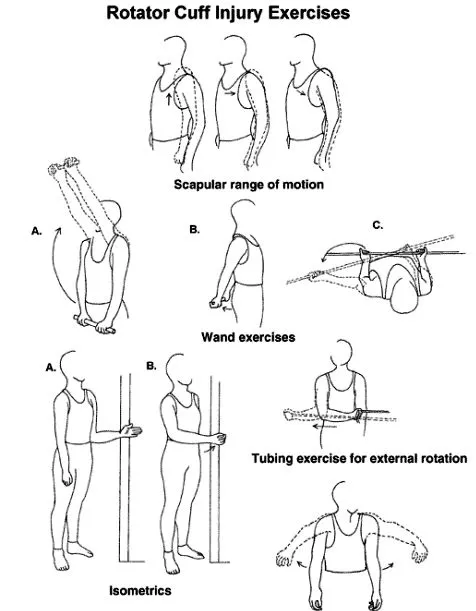
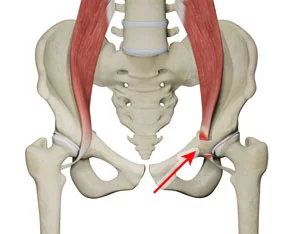

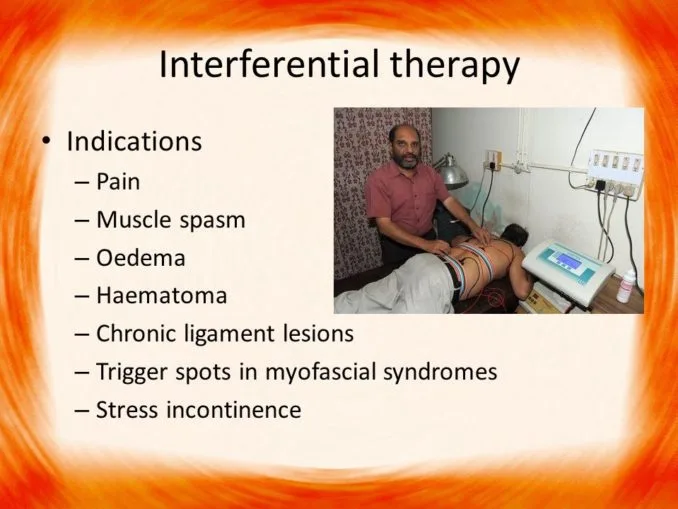
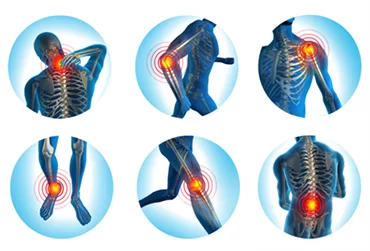
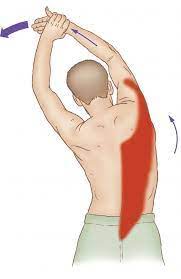
One Comment